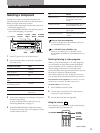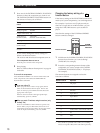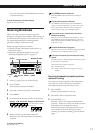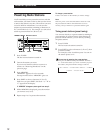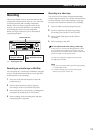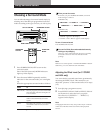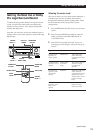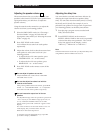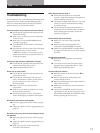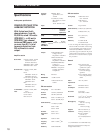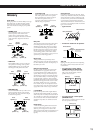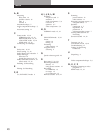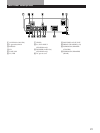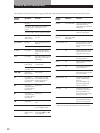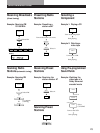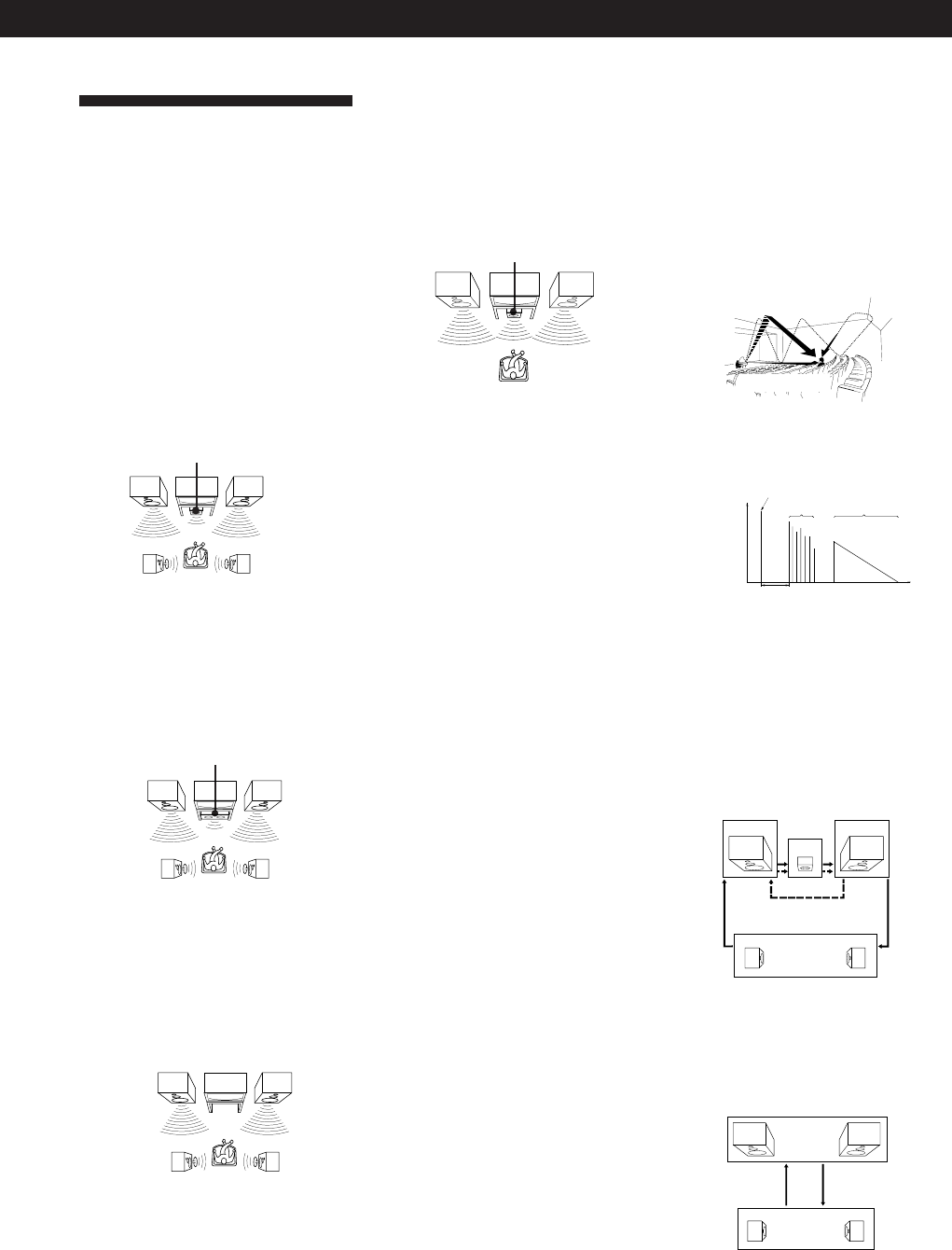
19
Additional Information
Surround sound
Sound that consists of three elements: direct
sound, early reflected sound (early reflections)
and reverberative sound (reverberation). The
acoustics where you hear the sound affect the
way these three sound elements are heard.
These sound elements are combined in such a
way that you can actually feel the size and the
type of a concert hall.
• Types of sound
• Transition of sound from rear speakers
Test tone
Signal given out by the receiver for adjusting
the speaker volume. The test tone will come
out as follows:
• In a system with a center speaker
(NORMAL/WIDE/3 CH LOGIC modes)
The test tone is output from the front L
(left), center, front R (right), and rear
speakers in succession.
• In a system without a center speaker
(PHANTOM mode)
The test tone is output from the front and
the rear speakers alternately.
Glossary
Center mode
Setting of speakers to enhance Dolby Pro Logic
Surround mode. To obtain the best possible
surround sound, select one of the following
four center modes according to your speaker
system.
• NORMAL mode
Select NORMAL mode if you have front
and rear speakers and a small center
speaker. Since a small speaker cannot
produce enough bass, the bass sound of the
center channel is output from the front
speakers.
• 3 CH LOGIC mode
Select 3 CH LOGIC mode if you have front
and center speakers but no rear speaker.
The sound of the rear channel is output
from the front speakers to let you
experience some of the surround sound
without using rear speakers.
Delay time
Time lag between the surround sound output
from front speakers and rear speakers. By
adjusting the delay time of the rear speakers,
you can obtain the feeling of presence. Make
the delay time longer when you have placed
the rear speakers in a small room or close to
your listening position, and make it shorter
when you have placed them in a large room or
apart from your listening position.
Direct tuning
Tuning method to let you directly enter a
station’s frequency using the numeric buttons.
Use this method if you know the frequency of
the station you want.
Dolby Pro Logic Surround
Decoding system of Dolby Surround sound
standardized in TV programs and movies.
Compared with the former Dolby Surround
system, Dolby Pro Logic Surround improves
sound image by using four separate channels:
off-screen audio effects, on-screen dialog, left-
to-right panning, and music. These channels
manipulate the sound to be heard and enhance
the action as it happens on the screen. To take
advantage of Dolby Pro Logic, you should
have at least one pair of rear speakers and/or
one center speaker. You also need to select the
appropriate center mode to enjoy a full effect.
5.1/DVD INPUT
Jacks used to input the audio signals that are
decoded from the Dolby Digital AC-3 format
audio. The jacks are usually connected with an
AC-3 decoder or a DVD player equipped with
an AC-3 decoder. This connection enables the
amplifier to reproduce 5.1 channel surround
sounds.
Preset station
A radio broadcasting station that is stored in
memory of the receiver. Once you “preset”
stations, you no longer have to tune in the
stations. Each preset station is assigned its own
preset number, which lets you tune them in
quickly.
Center
Rear (L, R)
Front (L) Front (R)
3 CH LOGIC
NORMAL/WIDE
Center
speaker
Rear
speaker (R)
Rear
speaker (L)
Front
speaker (R)
Front
speaker (L)
• WIDE mode
Select WIDE mode if you have front and
rear speakers and a large center speaker.
With the WIDE mode, you can take full
advantage of Dolby Surround sound.
Center
speaker
Rear
speaker (R)
Rear
speaker (L)
Front
speaker (R)
Front
speaker (L)
• PHANTOM mode
Select PHANTOM mode if you have front
and rear speakers but no center speaker.
The sound of the center channel is output
from the front speakers.
Front
speaker (L)
Front
speaker (R)
Rear
speaker (R)
Rear
speaker (L)
Center
speaker
Front
speaker (R)
Front
speaker (L)
Early reflections
Reverberation
Direct sound
Direct sound
Level
Early reflection time Time
Early
reflections
Reverberation
Rear (L, R)
PHANTOM
Front (L, R)



